CATEGORIES
最新のストーリー
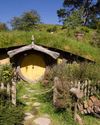
11-Day Middle-earth Fantasy in New Zealand
IT’S LITTLE SURPRISE that many libertarians count The Lord of the Rings among their favorite stories.

TO HIDE FROM THE STATE, OR TO ESCAPE?
IN HIS 1970 classic Exit, Voice, and Loyalty, Albert O. Hirschman explored three ways people can respond to institutional failure: by standing by the institution anyway, by speaking up to agitate for change within the institution, or by leaving the institution in protest. The European wars of religion, and persistent attempts by the victors in those conflicts to hem in the losers, produced manifold examples of all three.

NOTRE-DAME REBORN FROM THE ASHES
FIRE NEARLY DESTROYED the Notre-Dame Cathedral in 2019. Thanks largely to an outpouring of private donations, the cathedral now shines more brilliantly than it has for centuries.

The Possible Birthplace of Wine and Definite Birthplace of Stalin
THE PEOPLE OF Georgia might well be the first folks who ever got properly wine-drunk.
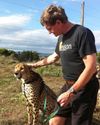
Wildlife Thrives on Privately Owned Reserves
SITTING IN THE front seat of an open Land Rover being driven furiously backward for about a half-mile while being chased by a bugling, ear-flapping, and very pissed off elephant matriarch is, well, pretty exciting. Our guide later speculated that she had been spooked earlier by a roving pride of lions.

Gripper the Class Turtle
IN 1993, A student at my wife's elementary school brought in a box turtle he'd found in the wild. My wife agreed to keep Gripper as a pet for her second grade class.

FULL SPEED AHEAD
THE TEEN WAS TRAPPED IN A CAR ACCELERATING OUT OF CONTROL. COULD IT BE STOPPED BEFORE HE RAN OUT OF ROAD?

SUN, FUN & PLASTIC SURGERY?
Americans are packing their bags and heading abroad for more affordable health care. Is that a good idea?

DIG IN!
CLASSIC COMFORT FOODS FROM ALL 50 STATES

My Summer To-Do List
How it started ... and how it’s going

‘Without You I Wouldn't Be Alive Anymore’
A Georgia grandmother and a young German man are forever connected, thanks to a lifesaving donation

Oh, the Places You'll Go!
Proof that the best souvenir you can bring home from a trip is a hilarious story

YES, DRIVING IS MORE DANGEROUS NOW
After decades of declining fatality rates, more people are speeding, plowing through intersections, and driving impaired

Oops
Some of the greatest minds in history went to their graves lamenting their most influential work. Like these eight groundbreakers ...
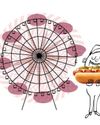
Let's All Go to the Fair
THE FAIR is coming to town! More than 1,700 county and state fairs take place in the United States each year—and all year round, though most are held in summer. More than 23 million people attended a state fair last year.

Warning: This Fruit May Orbisculate!
Two siblings honor their father by trying to get his made-up word into the dictionary
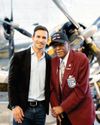
Your Wish Has Been Granted
Seniors are seeing their dreams come true, thanks to a former Olympic athlete

Beat the Heat
How to stay cool when temperatures soar

Juneteenth should be an impetus to heal from legacies of enslavement, says The Global Circle for Reparations and Healing
In anticipation of this year’s observance of Juneteenth, the Global Circle for Reparations and Healing released a Declaration urging all Global Africans (Africans on the Continent and across the Diaspora) to focus intently on healing.

Why standing up against Trump is good for business
'Corporations are just brands and talent. Surrendering to Trump sacrifices both,' says Robert Reich.

Lloyd Augustus Hall
Lloyd Hall was born on June 20, 1894, in Elgin, Illinois.

Fortune 500 Milestones Reveal The Big Lie Behind Equity & Inclusion Backlash
\"Our findings suggest that Black leaders are required to meet a higher bar for advancement and point to the need to level the playing field for advancing up the organizational hierarchy.\" - researchers Seung-Hwan Jeong, Ann Mooney, Yangyang Zhang, and Timothy J. Quigley

Chester's Hometown Heroes
Delaware County has always been a proud part of our Commonwealth, populated by men and women who are hard-working, loyal, dedicated, and willing to step up when needed.

PA Black Maternal Health Caucus celebrates PA MOMNIBUS 2.0
The co-chairs of the Pennsylvania Black Maternal Health Caucus on Monday held their PA MOMNIBUS 2025 Day at the state Capitol. The events of the day were held to observe the progress of the group in the previous legislative session and highlight the new PA MOMNIBUS 2.0 legislative package for the 2025-26 session.
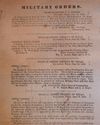
Juneteenth started with handbills proclaiming freedom. Here's what they said
The origin of the Juneteenth celebrations marking the end of slavery in the U.S. goes back to an order issued as Union troops arrived in Texas at the end of the Civil War.
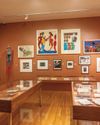
The home of one of the largest catalogs of Black history turns 100 in New York
It is one of the largest repositories of Black history in the country — and its most devoted supporters say not enough people know about it.

Honoring Juneteenth
In 2021, President Joe Biden signed into law the bill that had been passed by unanimous consent in the Senate and 415-14 in the House to establish Juneteenth National Independence Day, June 19, as a federal holiday.
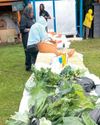
West Philadelphia Urban Farm celebrates 20 years
Members of Mill Creek Urban Farm in West Philadelphia celebrated 20 years of serving the community during its Community Day event held on the 4900 Block of Brown Street in the Mill Creek Section of Philadelphia.

Black History Corner
Kendrick Lamar Duckworth was born in Compton, California, on June 17, 1987. He was named after singer Eddie Kendricks of the R&B/Soul group The Temptations. His father, Kenneth “Kenny” Duckworth, was a manual laborer, and his mother, Paula Oliver, was a hairdresser.

100,000 rides and counting: Camden Loop's impact continues to grow in just two years
As it marks its second anniversary this month, the Camden Loop, an innovative, on-demand public transit service, continues to prove its value to the community, with more than 100,000 rides completed since its launch.
